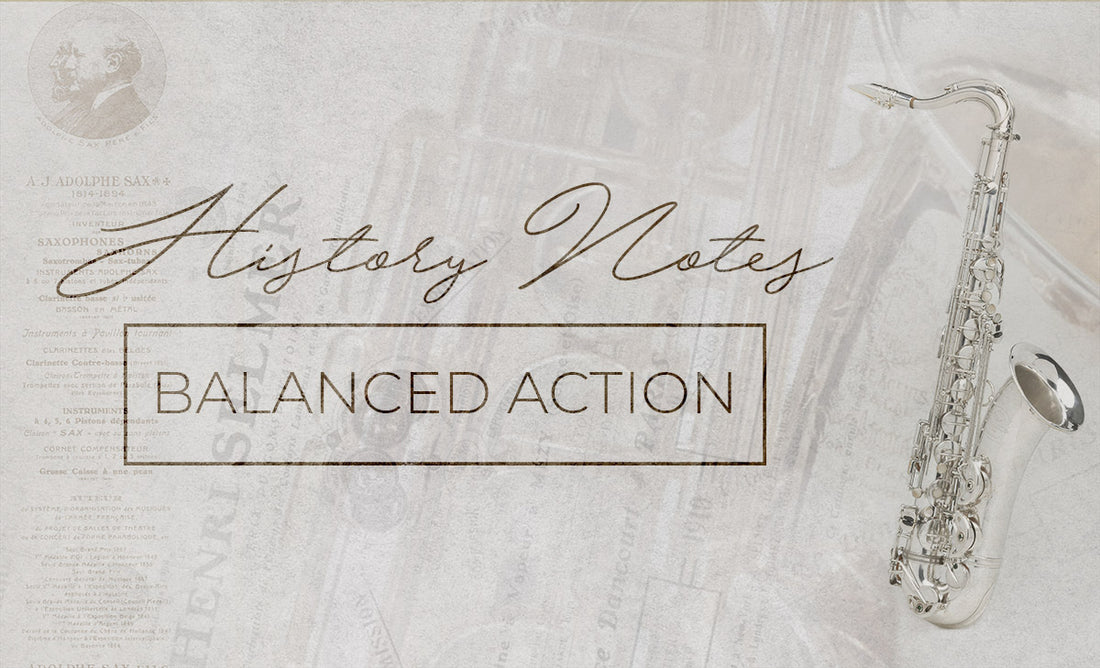History Notes #06 : Balanced Action

« In April of nineteen thirty five, Henri SELMER Paris introduced a new line of instruments. A line that essentially is realized as the birth of the modern saxophone. The instrument that changed everything. I could go on and on and on... Everybody watching this video probably understands and agrees.
The Balanced Action was a radical redesign top to bottom of the instrument. The Bell keys were moved from the left side to the right side, and you'd say, what's the big deal? What this meant was that all the rods, all the long rods that are difficult to push were centered down the instrument. And it created a very even scale in the amount of pressure you had to use top to bottom.

The low keys were very easy to press, the top keys, very easy to press. There was a newly redesigned for the left pinky. All the low keys, low B, C sharp and B, previously had been a little difficult to use. Vast improvement. Over all, they just tweaked every single thing about the instrument and it has become known as a fantastic instrument.
The Balanced Action altos and baritone started shipping in April 1935. The tenors were a little bit later. The very last radio improved alto is number 20.633 and the first known balanced action alto is 20.635. So what happened to the one in the middle? We're not quite sure, it could be one or the other.
The tenors started around 20.900. I have an interesting personal story. I was very lucky to be able to get one of the prototypes in my collection. Henri SELMER Paris built three prototypes : one as an unfinished instrument was sent to the US, the second as an unfinished instrument was sent to SELMER London, and the third was fully built, silver plated, all the trill keys, all the trimmings... It was like, here's the most amazing balanced machine we could make, and it was sold to SELMER Montreux. I was lucky enough to acquire this instrument from Italian buyer several years ago. I've had it fully restored and wow, it's an amazing instrument. If you're ever in Toronto, stop by and give it a play.

There were many adjustments to the Balanced Action. It's not like it just arrived as a completed model. For the Altos, the first 300 ou 400 instruments were the basic design. Then they added an adjusting stack for about 500 instruments. Then by 23.000, they removed the adjusting stack and added three feet on the back. I could go into detail, there's a lot of adjustments between 21.000 et 26.000. The same for the tenors.
Interestingly, production for the less popular instruments: the sopranino, the soprano, the bass, are virtually non-existent at this time. In fact, from 1930 to 1939 exactly one bass saxophone was produced. As I mentioned in a previous video, the large bore era Sopranos were built in a large quantity. So even the sopranos, they were still selling instruments in the 12.000 / 13.000 range throughout the 1930's.
So as the Balanced Action grew, it took over in the US, it was a major competitor to the US Conn instruments. Things were looking better and better, sales were going up and up, nothing could stop them.
And then nineteen thirty nine came around...»
►Subscribe to our youtube channel so you don't miss any episode
► Next episode: Last Super Sax
► Discover History Notes as a podcast